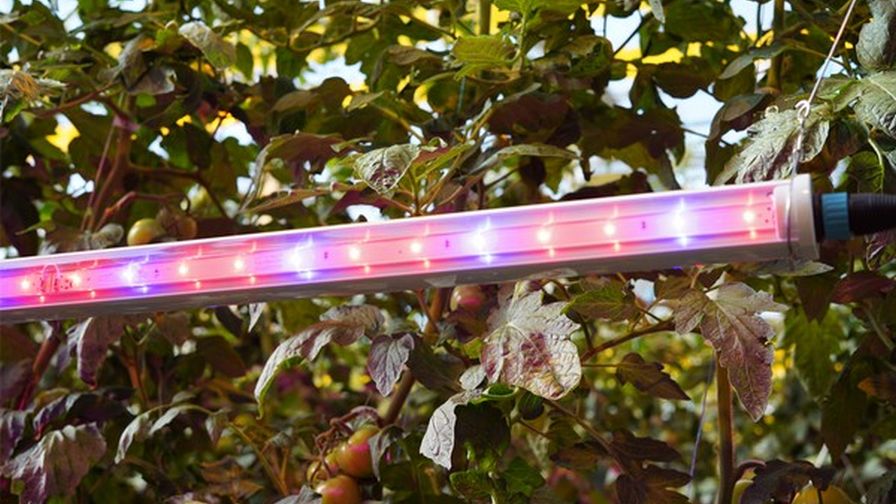In the case of electricity, we have to look at it specifically from a sustainability point of view. In that respect, the electricity use has to be lowered drastically. Leo explains that most energy goes to LEDs and cooling. WUR has already done many studies on the influence of light on plants. But according to prof.dr.ir. Leo Marcelis, there is still a lot of room for improvement.
Therefore, WUR recently started a study to look at the possibilities of reducing costs in vertical farms. The research is investigating the different aspects of light and the interaction with different climate factors. During the research, the color of the light, the intensity, the moment of the day (intervals), where the light is administered (between or above the plant) and what kind of crop is grown will be looked at.
Leo Marcelis
"Research has demonstrated that different light spectra along with different intervals yet show a lot of response. However, not every plant reacts the same to it, thus more study needs to be carried out on those specifics. Playing around with light intensity changes a lot of parameters in a farm and when the light intensity is changed optima for temperature and CO2 concentration may change as well," Leo notes.
He continues, thus, when using light more efficiently, less light can be applied in a farm. The first step should then be, to use more efficient LEDs, then get the light absorbed by the leaves and then use this absorbed light efficiently by the plants.

The different spectra are seen in the top and bottom layer of the experiment
Add more benefits to crops
Leo still sees some areas for improvement. We now know how to obtain high-quality production. However, quality control of products still has some unsolved questions we can investigate. Besides that, the industry has to work hard on its cost price by producing more efficiently. If vertical farms can guarantee the same quality every day, they can take it a step further than conventional products. For example, adding more vitamins to the product.
“In Europe, there is a market for high-quality produce, but this segment will not become a mass product. However, in the short term, it will become the top of the market. Though, over time I expect the cost price to reduce. If the cost price wasn’t that high, we should have seen more companies entering the market in for instance The Netherlands. Given we have very efficient greenhouse production here. Then again, it depends on where a vertical farm is positioned geographically as each market has a different cost price.”

A different spectra is applied to the crops here
Finding a balance between vegetative and generative growth
"What we find very intriguing to see is the growth of quality. If we want to use light efficiently, nothing should be dropping on the ground. In the pathway, this seems simple, but inside the farm, it still can be improved. E.g. looking at what plant densities can be applied? After identifying that, the trial looks at setting the optimal color, intensity, and day length.
That's why the research is also looking at how to control plant height in vertical farms. With their tomato trial, for instance, far-red light is used to balance out the vegetative and generative control of light. The hard part is that there has to be a balance in the growth of the fruit, in this case, and the leaves. The light should only be on when necessary, Leo points out.
As it shows, farmers can play around a lot with content to add additional value to their crops for either customers and end-users. Leo adds that, “With lettuce, you can apply a high light intensity of light shortly before harvest so you get more vitamin C. This is not only good for the user, but also for the shelf life of the product. Thus for supermarkets, this is also a hugely attractive selling point so they have less waste.”

A strawberry trial
Growing curiosity for vertical farming amongst students
For larger companies, it is easier to automate. In his opinion, labor is a very large cost. Globally, labor in agriculture has a poor reputation. Except for vertical farming, people are seeing great opportunities since it is high-tech and innovative.
This also reflects back to students as the common interest in vertical farming is picking up. The innovative and high-tech aspect is incredibly triggering as there is always something going on. And, you'll keep your hands clean, mostly.
Increased production in winter without detracting from the flavor and ...

Leo Marcelis on applying less light and different spectra to help save...

GE Current, a Daintree company, is offering open access to the finding...